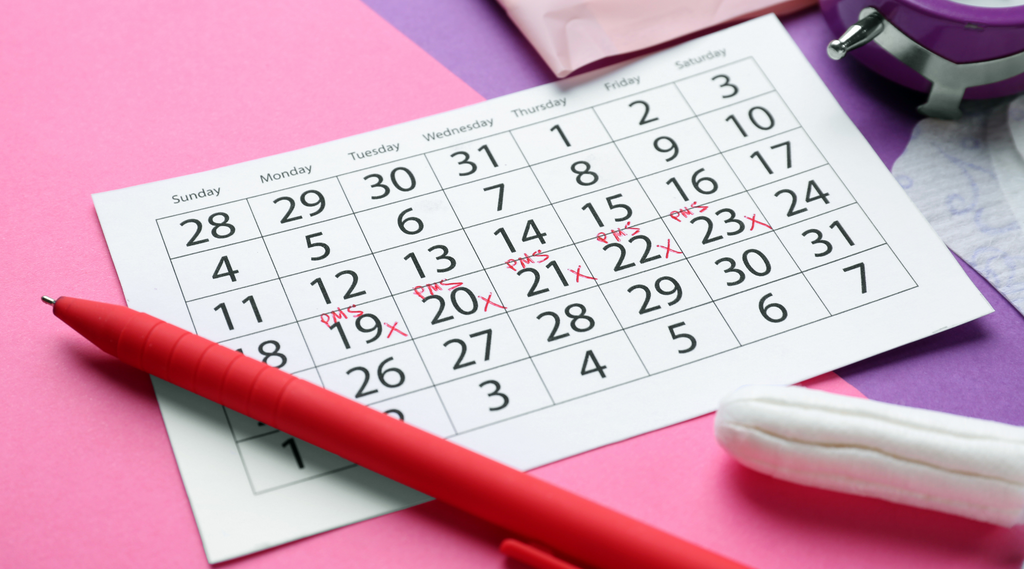
While many women conflate their menstrual cycle with their period, there’s a lot more to the story. As a whole, your menstrual cycle is a pretty darn incredible series of changes that happen in a woman’s body each and every month in preparation for the possibility of conception and pregnancy. The more you know about your cycle, the more tuned in you become to what’s happening in your body—and when. But what does your cycle say about your fertility?
Key Takeaways
- A menstrual cycle is divided into two phases: follicular and luteal.
- Understanding your cycle length can give you a preliminary understanding of your fertility.
- Women experiencing short or long cycles who are trying to conceive may benefit from blood work to ensure that ovulation is occuring.
- For women who are experiencing regular cycles, the best chance at conception comes when you have sex during ovulation.
What Is Your Menstrual Cycle?
Day one of your period is day one of your cycle, which is itself divided into phases. During the follicular phase, which also begins on the first day of your period, the brain triggers the release of follicle-stimulating hormone (FSH), which prompts the development of a single follicle containing one (precious!) egg. As the follicle matures, it releases estrogen to stimulate growth and thickening of the uterine lining. Once ovulation has begun, the follicular phase ends, so this stage is typically about 16 days long.
The next phase, ovulation, occurs when the ovary releases the mature egg into the fallopian tube. It’s the shortest phase of the menstrual cycle, lasting about 24 hours. Then the body shifts to the luteal phase, during which the ovary releases progesterone to further change the uterine lining and prepare for the possibility of an embryo attaching to the uterus. If no conception occurs, progesterone levels drop and bleeding begins. The luteal phase is generally 12 to 14 days.
What Does Cycle Length Say About Fertility?
Individual cycles often vary from month to month and certainly over the course of a woman’s lifetime, but cycle length can be indicative of your fertility health. First, the numbers:
- Average menstrual cycles are generally between 24 and 35 days.
- Short menstrual cycles are less than 24 days.
- Long menstrual cycles are more than 35 days.
Average cycle lengths suggest regular ovulation and the hormonal balance necessary to support a natural conception. Shorter cycles may indicate that ovulation either hasn’t occurred or happened much earlier than usual. They may also be a sign that the ovaries contain fewer eggs, which is why shorter cycles tend to be more common in women as they approach perimenopause. According to one study, short menstrual cycles are associated with reduced fertility (1). If your cycle is consistently short and you’re trying to conceive, blood work can offer some insight into whether you’re successfully ovulating, so it’s worth speaking with your doctor.
Long or irregular cycles can also be a sign that ovulation either isn’t happening or it’s occurring irregularly, which can make it difficult to time sex for the best chance of conception. Irregular ovulation triggers longer cycles, since it’s the progesterone dip that prompts bleeding. If a follicle doesn’t properly mature for ovulation, progesterone is never released and the uterine lining continues thickening thanks to the release of estrogen, until it eventually becomes so thick that bleeding begins. Often, this leads to a heavy, prolonged period and a lot of unpredictability.
When the ovaries don’t regularly grow a dominant follicle and release a mature egg, it’s known as oligo-ovulation. Polycystic ovarian syndrome (PCOS) is the most common cause, but thyroid issues can also be a culprit.
Timing Sex For Pregnancy
For women who are experiencing regular cycles, the best chance at conception comes when you have sex during ovulation—i.e., the most fertile time of your cycle. Regardless of cycle length, ovulation tends to happen around day 14. Since an egg survives between 12 and 24 hours following ovulation, and sperm can survive in a woman’s body between 3 and 5 days, the peak fertility window is about six days long (up to five days before ovulating and up to a day after). For the best shot at pregnancy, most experts recommend having sex either daily or every other day during this timeframe.
Couples who are at the timing-sex-for-pregnancy stage would also do well to improve their chances of a healthy conception with mindful lifestyle changes, including adequate sleep, regular exercise, good nutrition and stress management. Both partners will also benefit from the specialized nutrition of a prenatal vitamin to fill in the gaps in their diets and ensure key micronutrients necessary for reproductive processes. Beli for Women is formulated with bioavailable forms of B6 and B12, two vitamins that work together to help promote regular ovulation, along with ingredients like folate and choline, two nutrients that are absolutely essential during the earliest days of a pregnancy, and vitamins, minerals and antioxidants designed to promote egg quality and help balance hormones. Beli Vitality for Men, meanwhile, is a simple way to support sperm health during the maturation process.
The Bottom Line
If you’re having regular periods but still not getting pregnant, there can be a lot of things going on. Likewise, if you’re experiencing missed periods, long or short cycles, abnormal menstrual flow or spotting, these can be indications of an underlying issue. In both cases, consulting your doctor or a fertility specialist for a closer look at your cycle is a great place to begin clarifying your situation.
Article Resources
1. Wesselink, A et al. (2016). Menstrual cycle characteristics and fecundability in a North American preconception cohort. https://www.ncbi.nlm.nih.gov/pmc/articles/PMC4964792/


